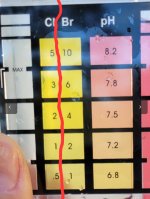The Taylor K-2006 provides two options for testing Cl. The Free, Combined & Total (DPD) method directly measures Total Cl from which you subtract Free Cl to achieve Combined Cl or TC-FC=CC.
The Free & Combined (FAS-DPT) method is more complicated and allows you to determine CC directly, then FC + CC = TC.
I don't think I need to perform both, but which is the most popular to use? Is there a consensus on this?
The Free & Combined (FAS-DPT) method is more complicated and allows you to determine CC directly, then FC + CC = TC.
I don't think I need to perform both, but which is the most popular to use? Is there a consensus on this?





